In the mid-1900s, George W. French, Class of 1908, was the official photographer for the tourism-focused Maine Development Commission, which placed him foremost among those who the visually interpreted the Maine slogan “Vacationland.”
Both as a student and later as a professional photographer, he did his part to interpret the Bates campus through imagery.
This edition of Then and Now presents historical Bates images by George French and images taken this week during the waning days of a gorgeous fall foliage season.
Use your mouse to grab the slider (or swipe your finger if on a phone or tablet) to reveal more or less of each image.
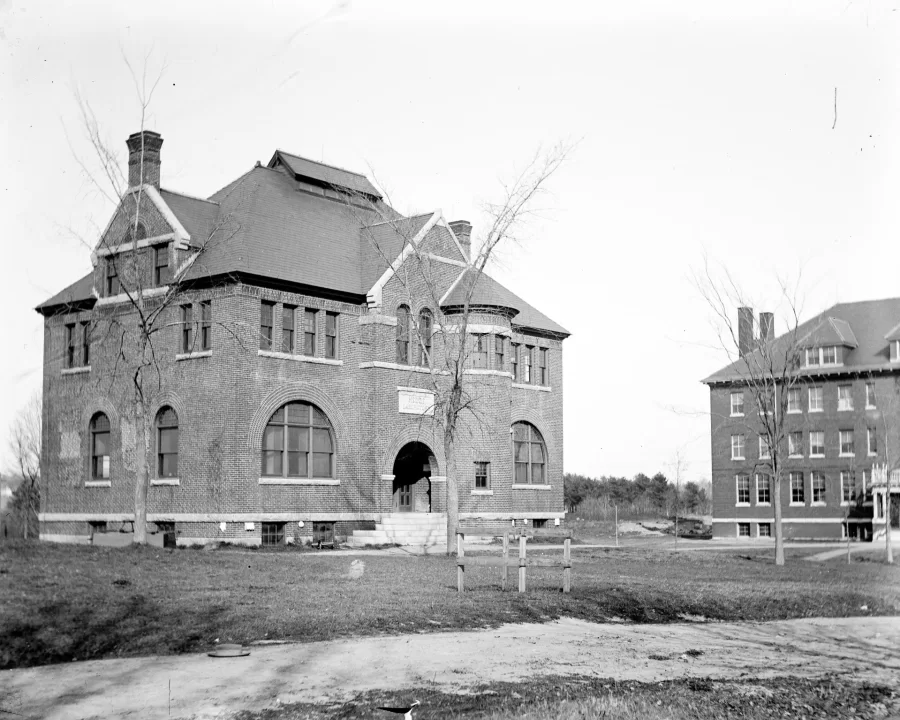
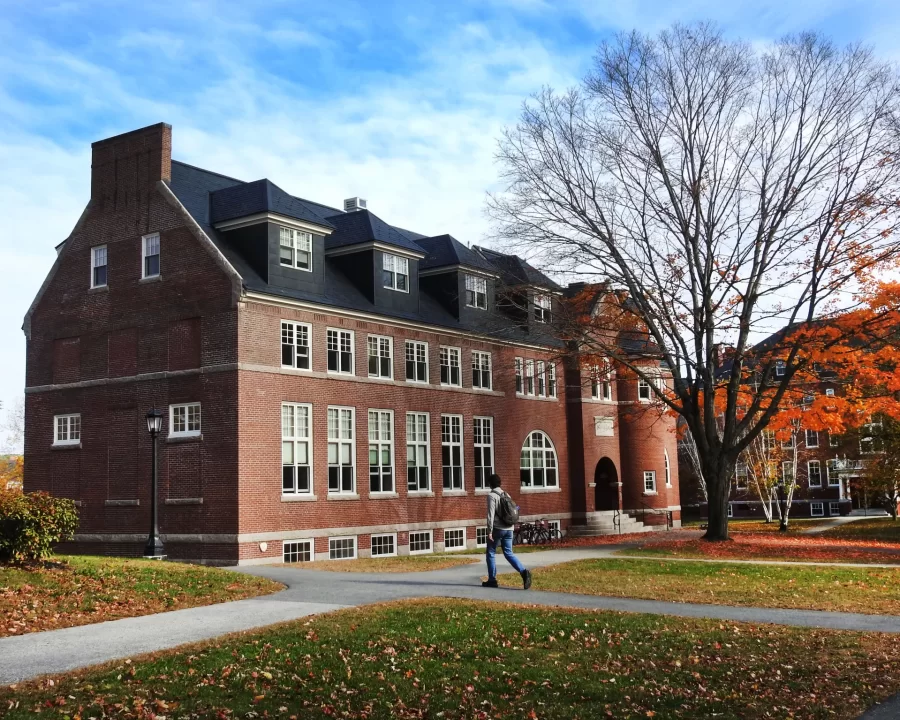
Hedge Hall (1890) was first a chemistry building, then a residence hall, and is now an academic building for environmental studies, religious studies, and philosophy. It was added onto twice, first in 1926 and then in 1950.
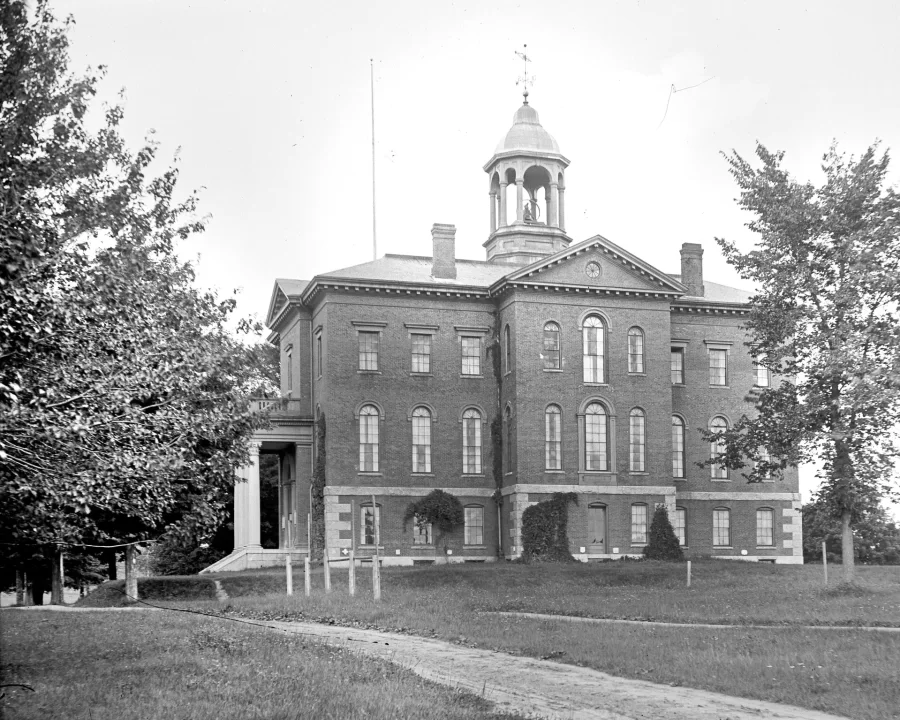
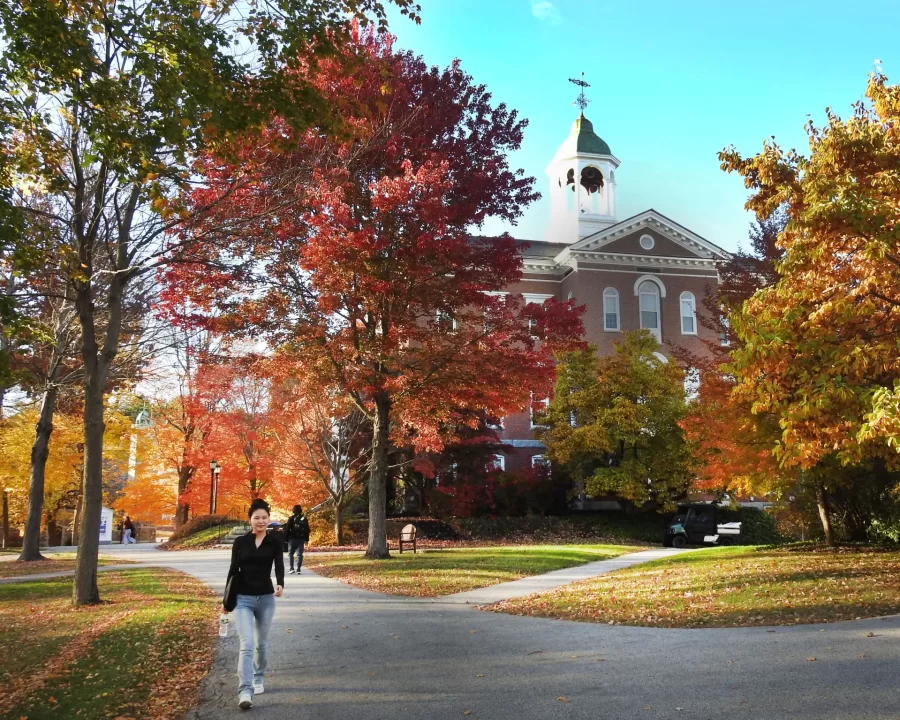
Hathorn Hall opened in September 1857. The laying of its cornerstone the year before drew a crowd of 5,000, many of whom marched from downtown Lewiston to the grounds of the new Maine State Seminary for the occasion. At right, Muey Li ‘28 of Bazhong, China, walks a campus path that generations of Bates students before her have walked.
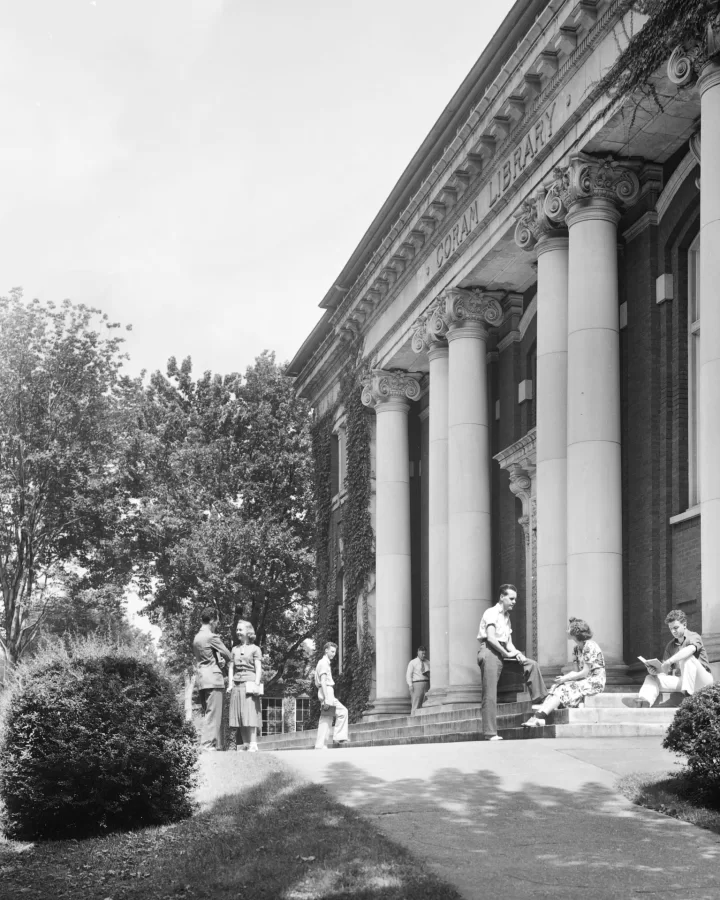
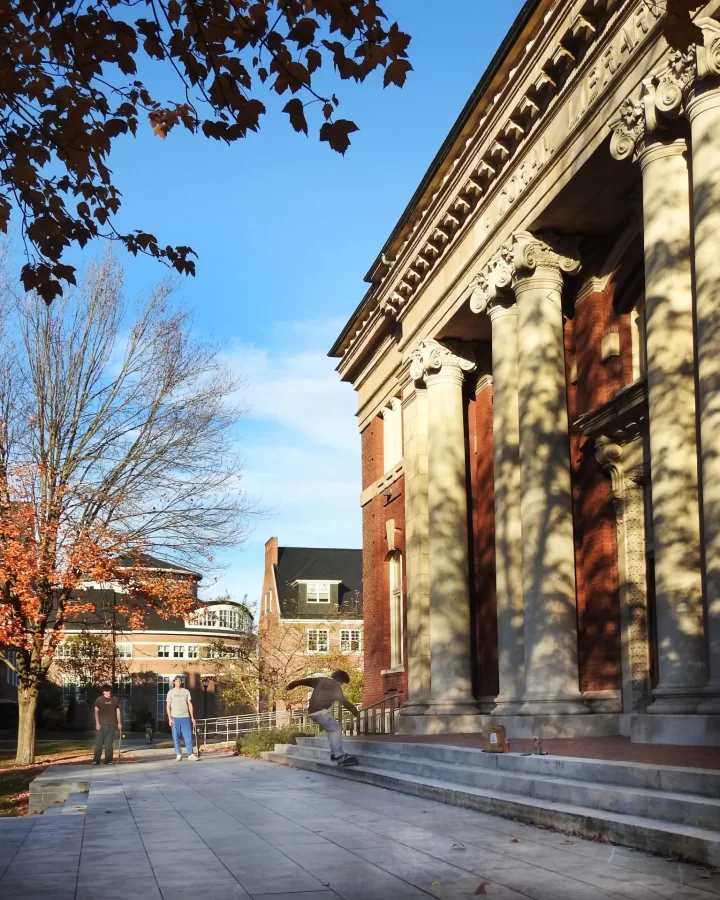
The terrace and steps of Coram Library (1902), a fine spot for lounging throughout the decades, often draws skateboarders.
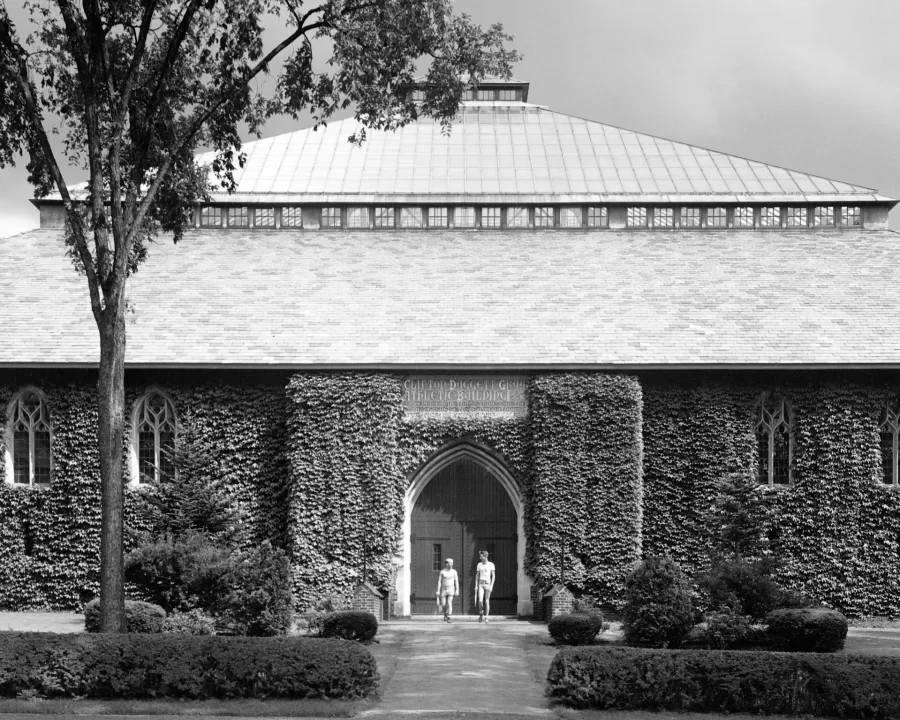
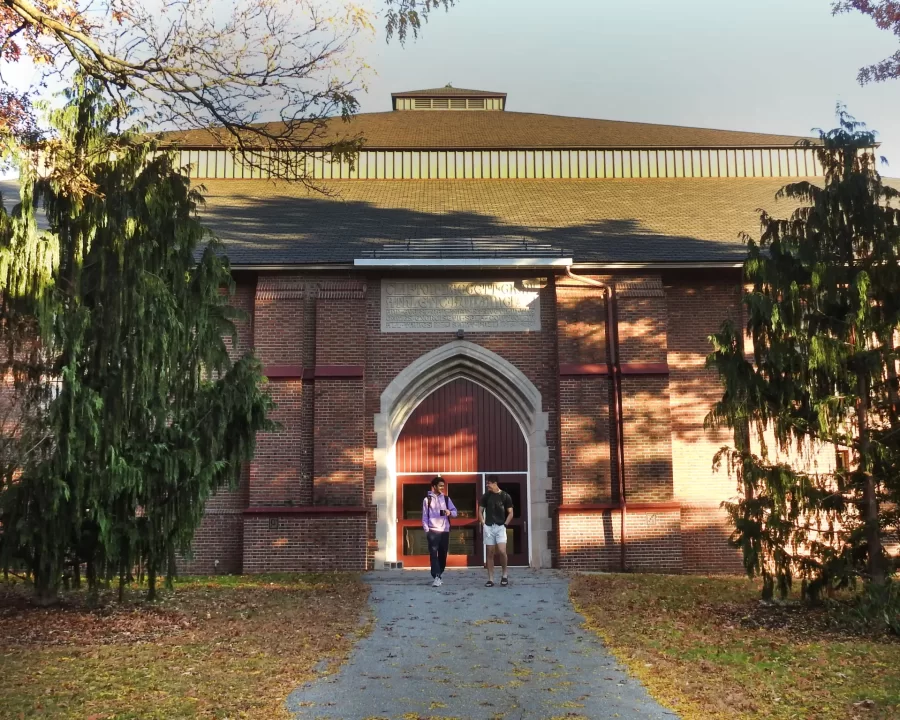
At left, two students holding tennis rackets talk as they leave the Gray Athletic Building. At right, Krishna Kakani ’25 of Monroe, N.J. and Evan Migdole ’26 of Westbrook, Conn., leave the building after shooting hoops.
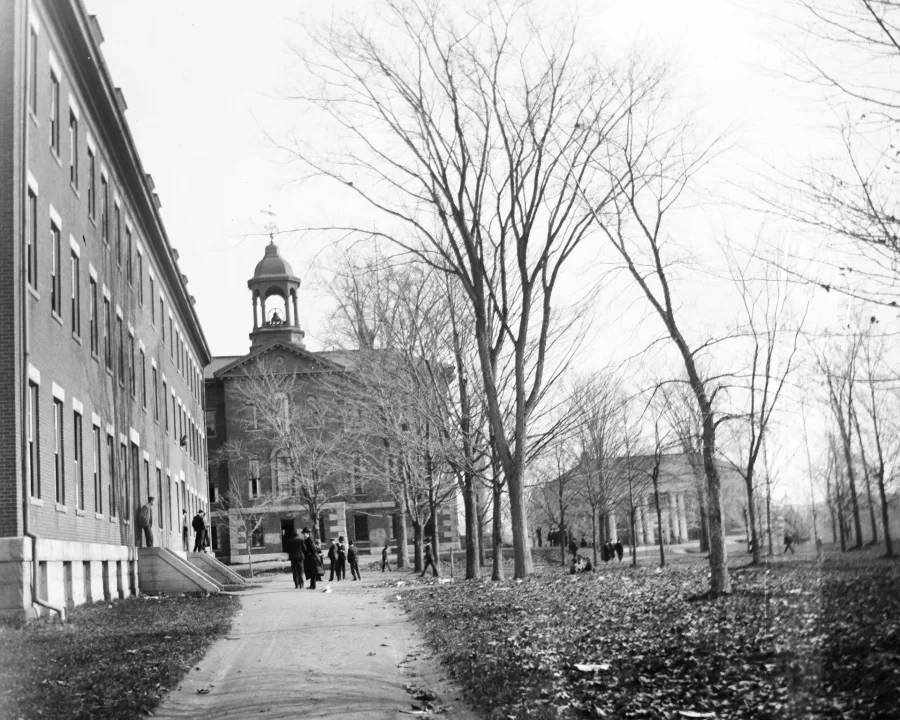
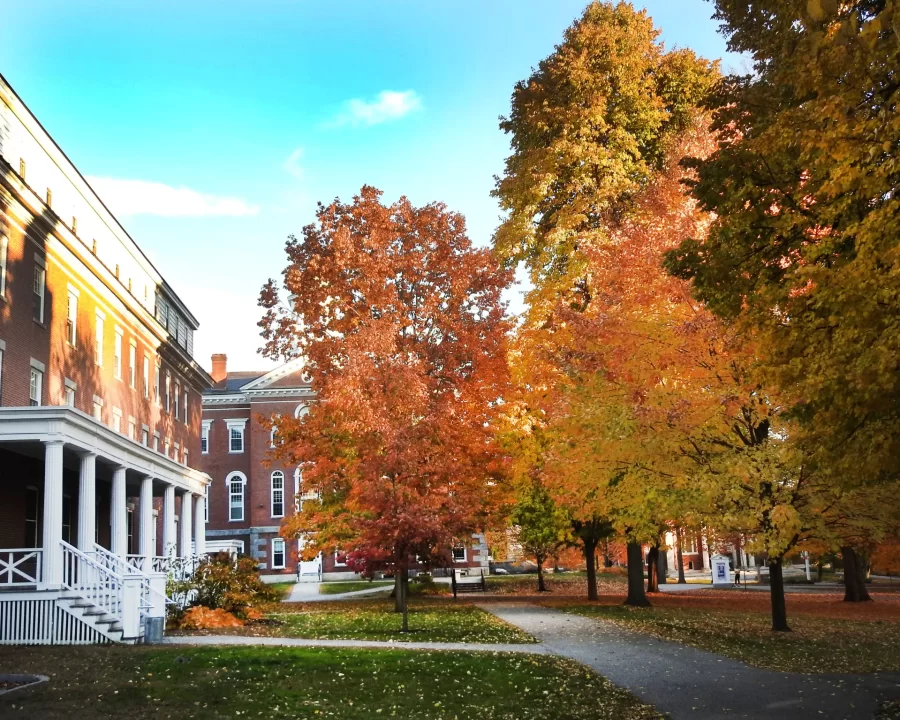
At the opening of Maine State Seminary in 1857, Parker Hall was not quite finished, so the seminary leaders asked Lewiston citizens to open their homes to students as boarders. A shed behind Parker held firewood for the students’ use. Each student’s wood supply was placed in separate, labeled stalls.
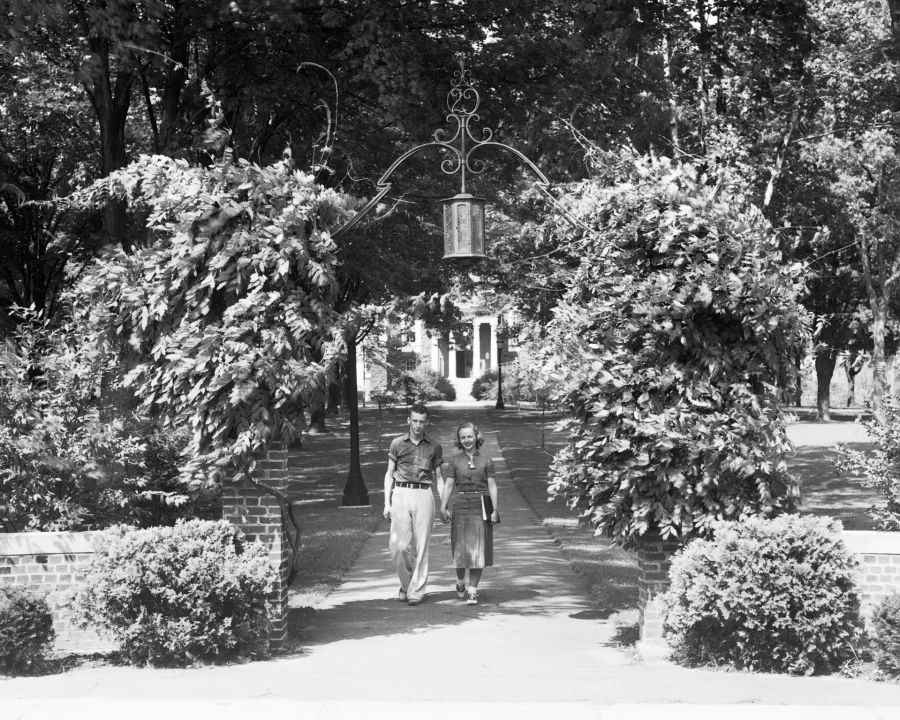
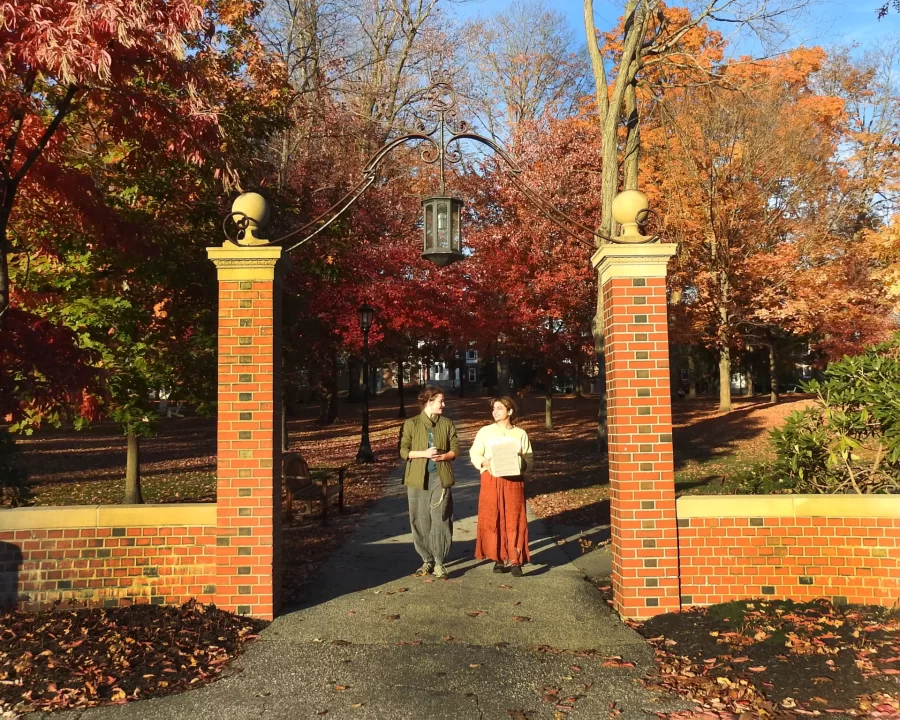
At left, two students walk from the Historic Quad through the Class of 1929 Gate. In the current photo, that’s Natalia Jacobs ’26 (left) of Shutesbury Mass., and Miriam Almzainy ’26 of Madaba, Jordan.
Almzainy is holding a box of ribbons that she was inviting students to write reflections upon, to be part of the next day’s Remembrance Service to commemorate one year since the October 2023 mass shootings in Lewiston.
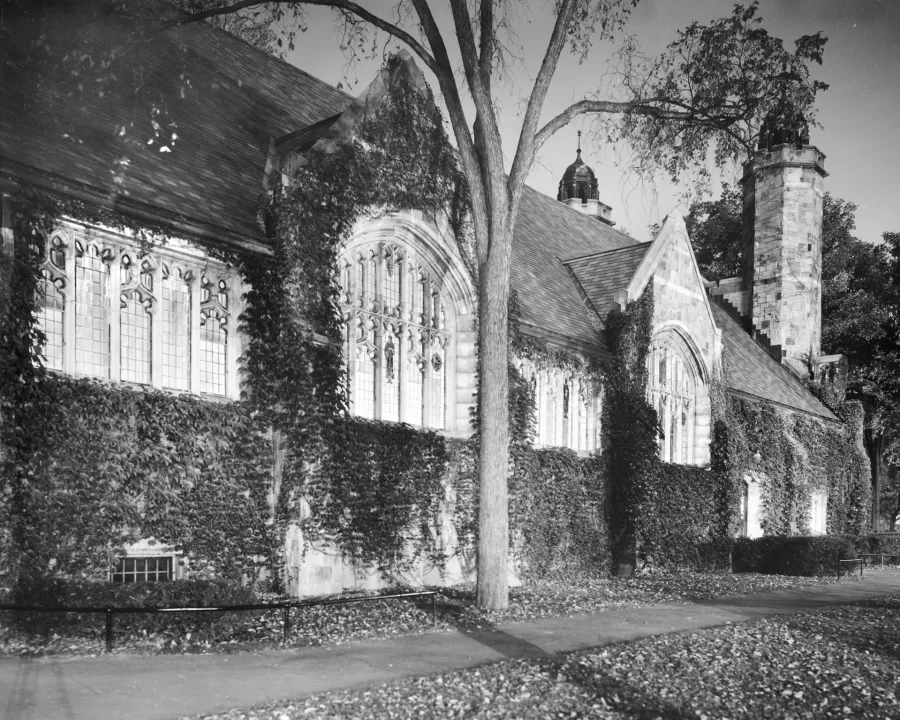
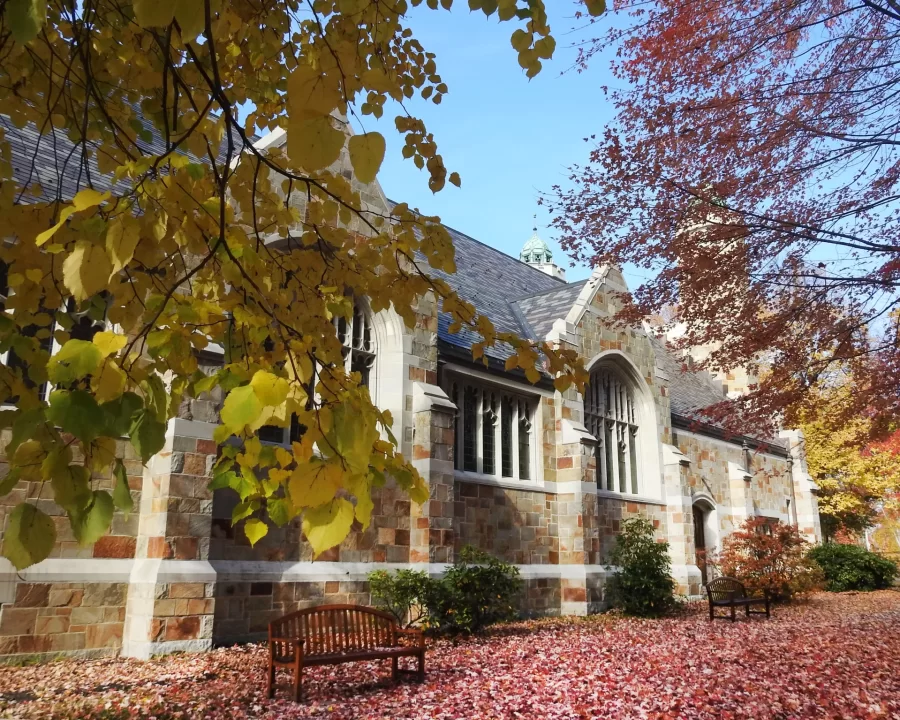
The stone of Gomes Chapel (1914) is known as seam-faced granite. Quarried near Hingham, Mass., it carries a distinctive and natural tone and texture, especially apparent when illuminated by the sun on a fall afternoon.
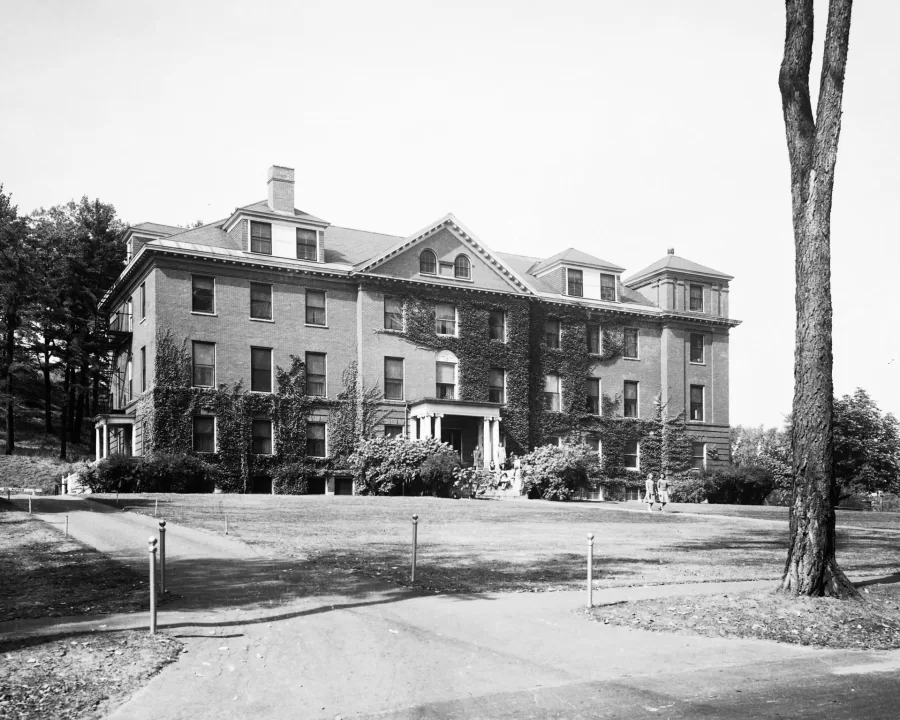
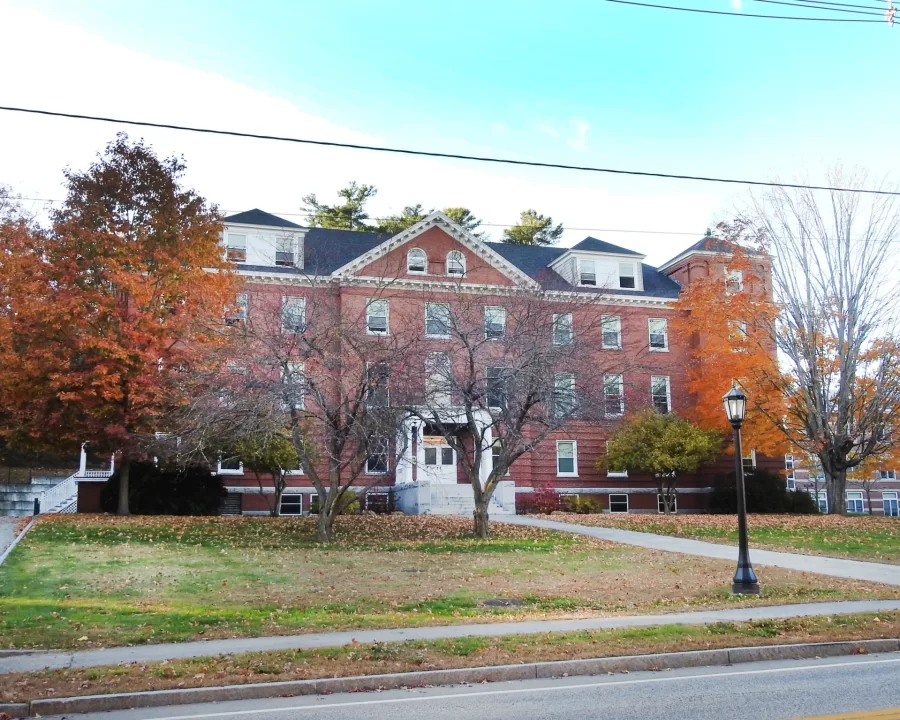
Rand Hall (1905) was named for John Holmes Rand, a Bates mathematics professor who oversaw its construction.
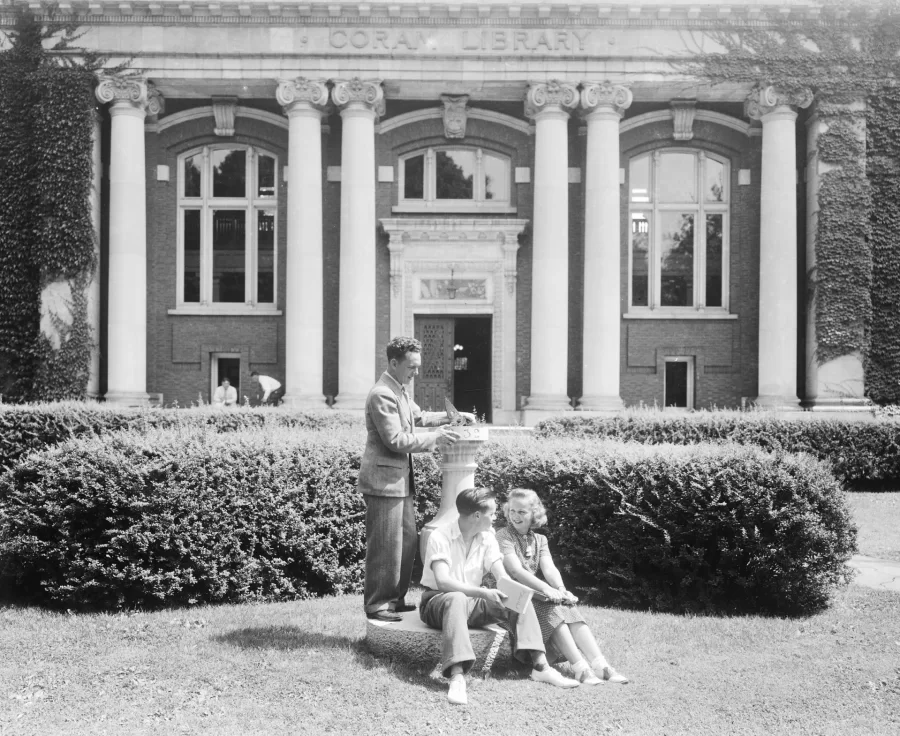
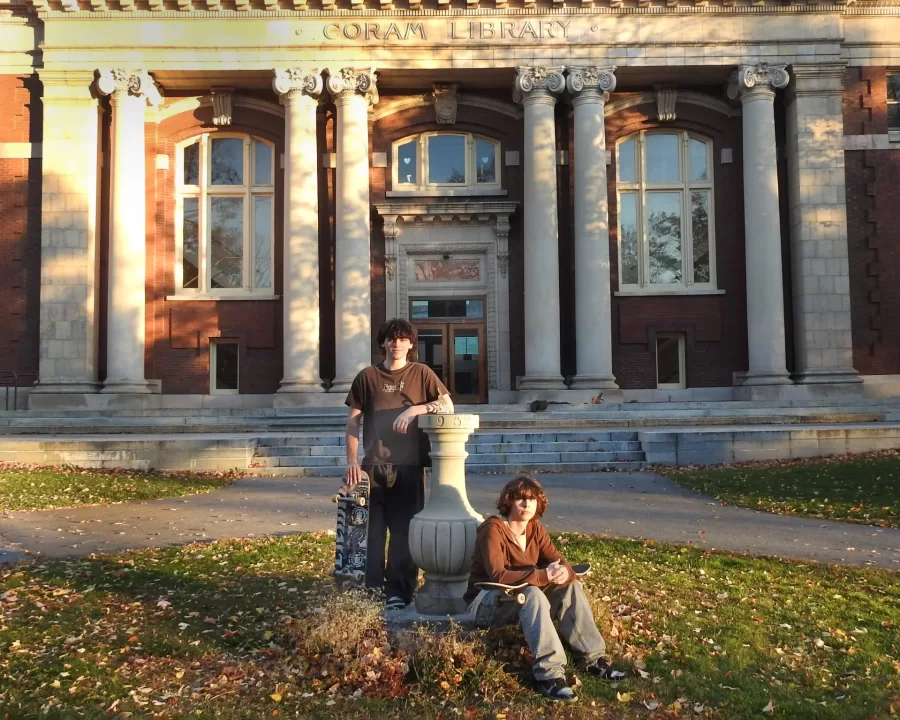
At left, in 1938, a trio of students pose by the Class of 1932 sundial. At right, Andrew and Harrison, local high school students, pause for a portrait after skateboarding on the Coram Terrace.
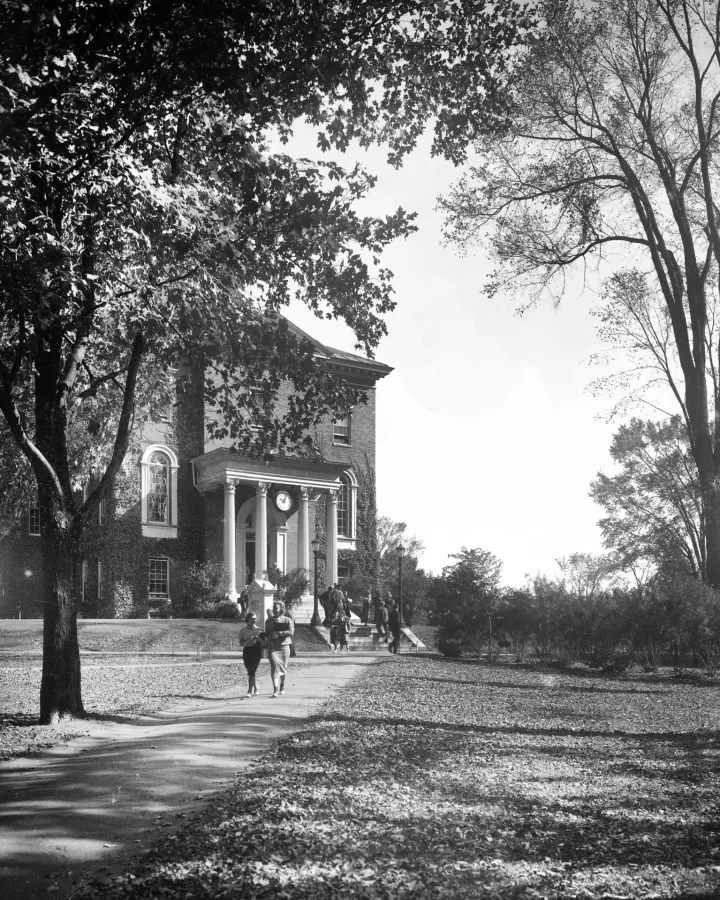
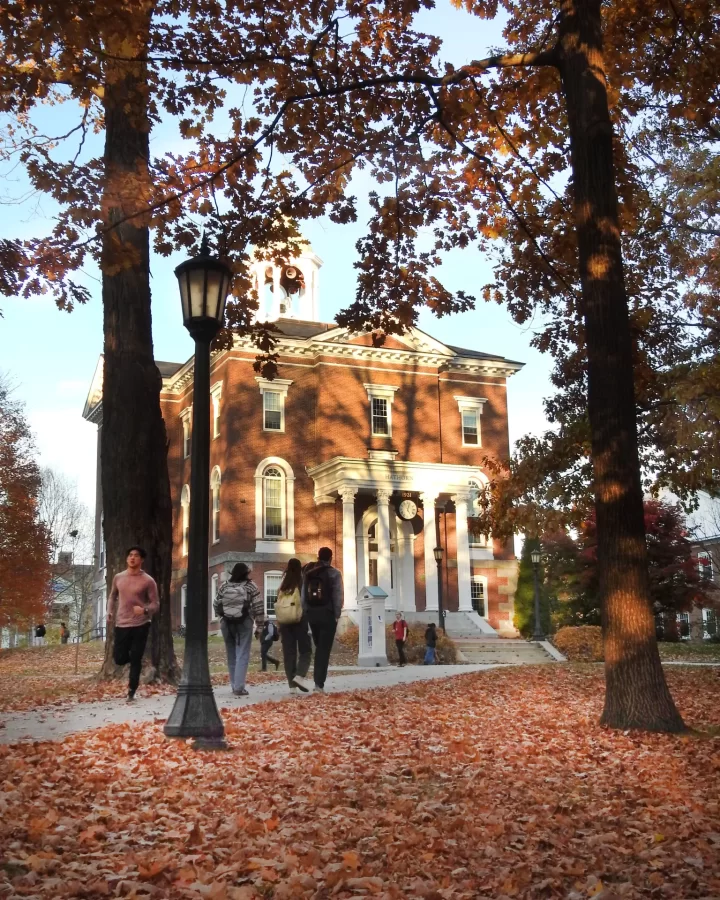
The walkway from the corner of Campus and College streets toward Hathorn Hall is traditionally one of the busiest on campus. Arguably, it also might provide the best foliage viewing.
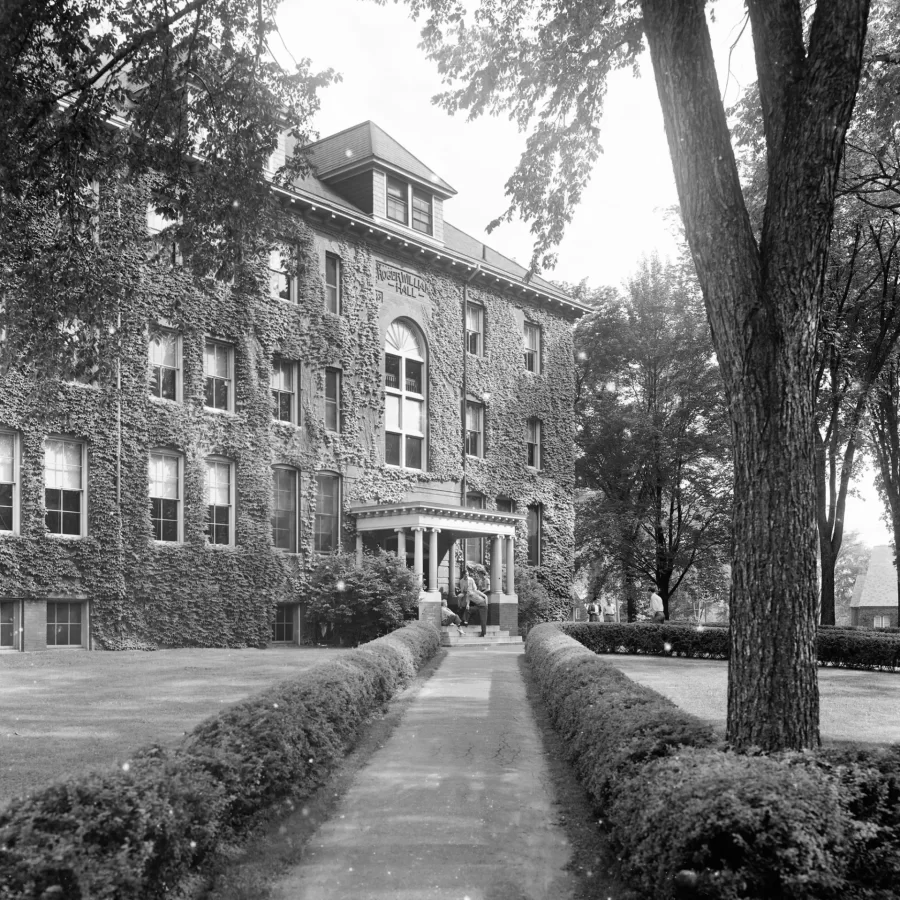
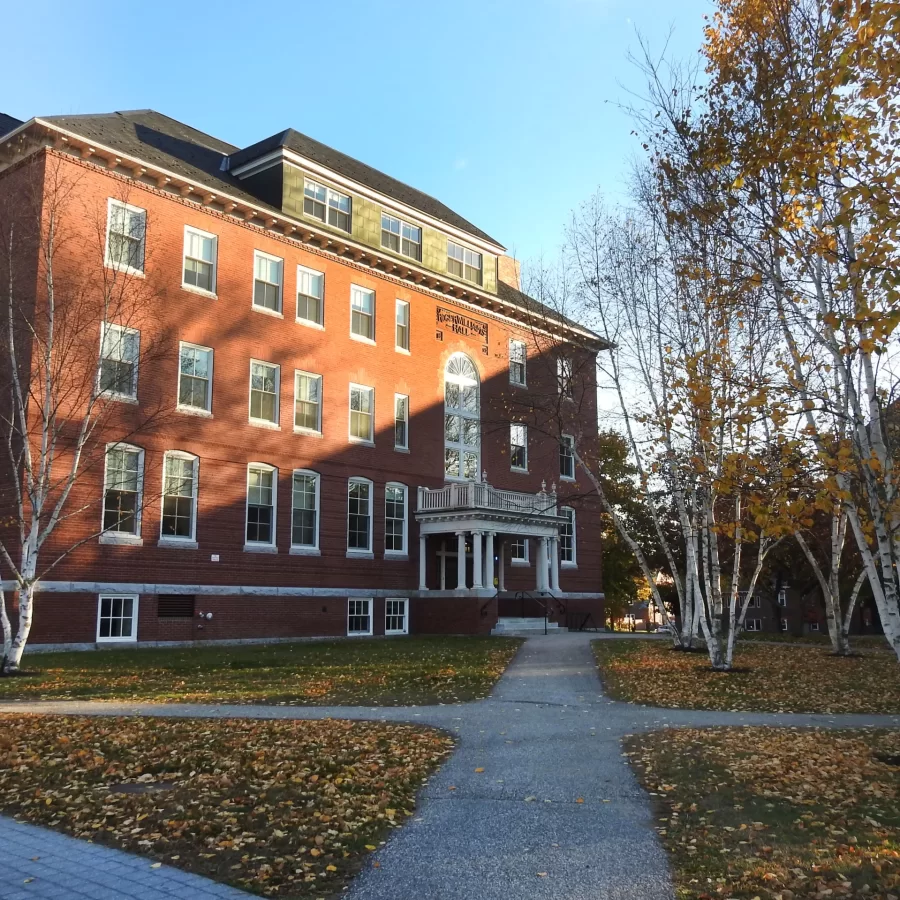
Like many Bates buildings, Roger Williams Hall (1985) has had a few identities, first as a divinity school, then a residence hall and administrative offices, and now is home to the college’s languages departments and programs.
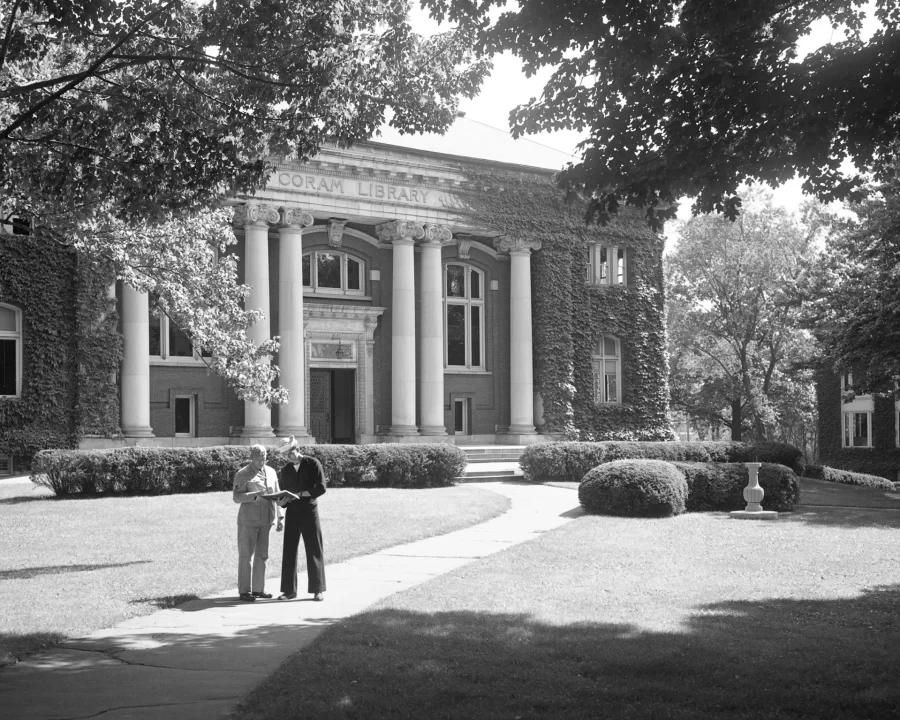
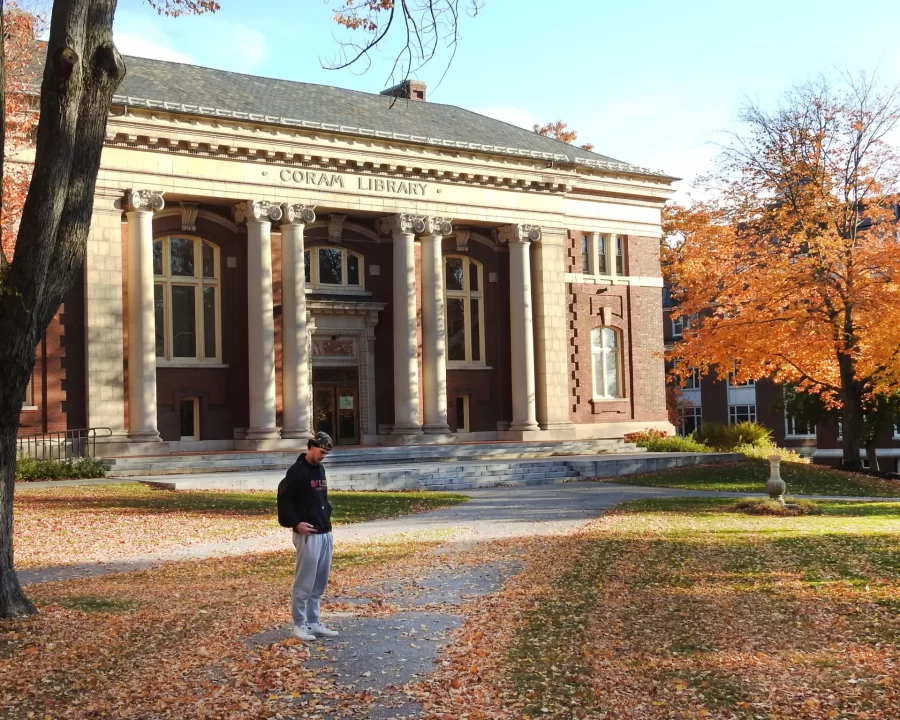
The two men talking at left in front of Coram were likely part of the Navy V-12 program, which stationed 120,000 student sailors at 131 U.S. colleges, including Bates, for officer training and accelerated college instruction during World War II.
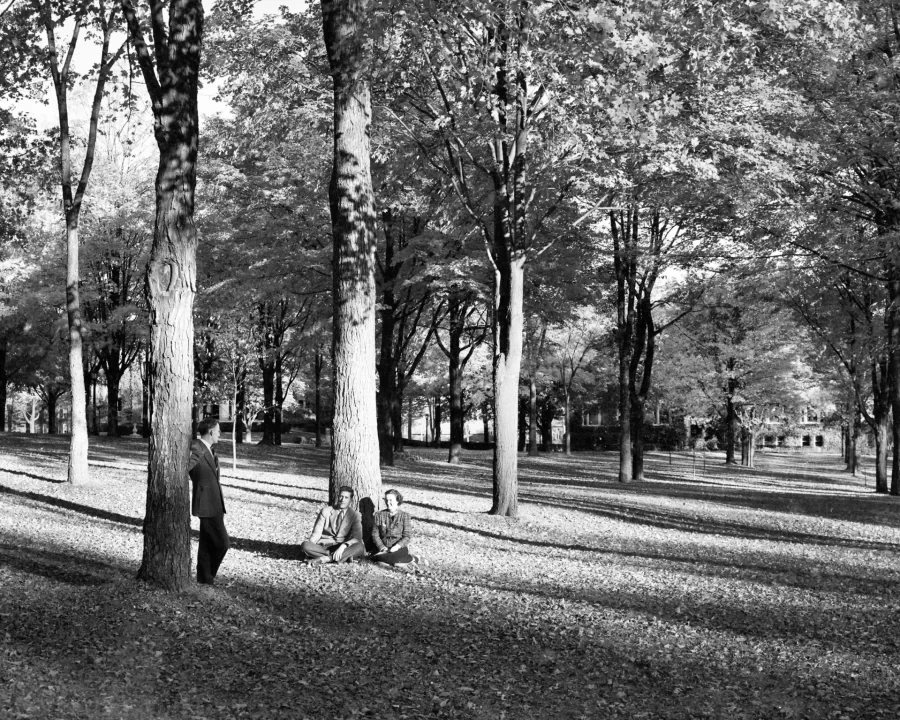
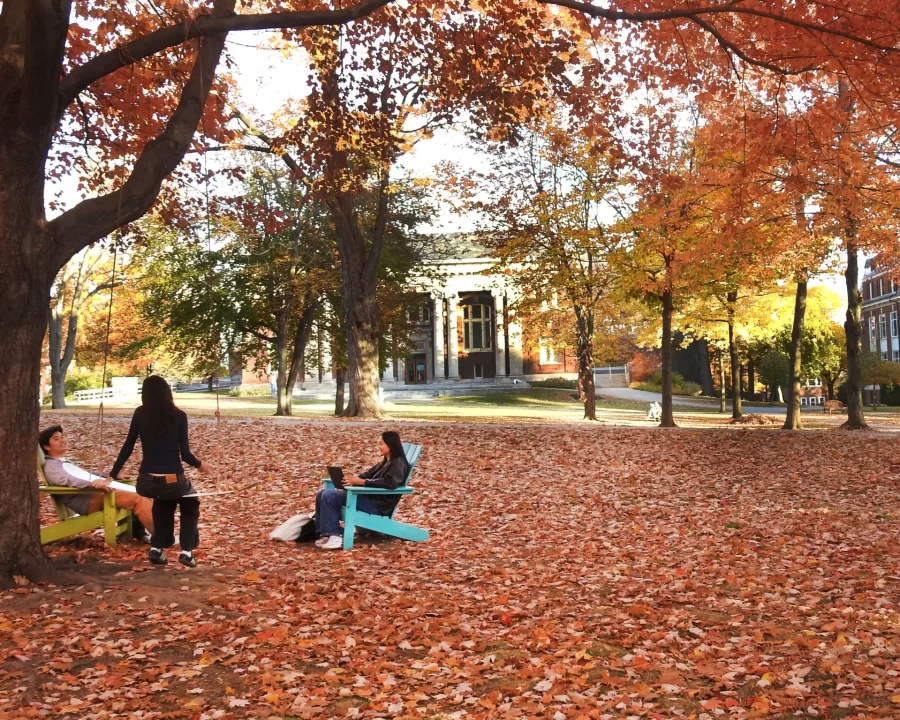
The Historic Quad. In the right, a more modern version includes a swing, unauthorized, but in the fall of 2024, much appreciated by students.
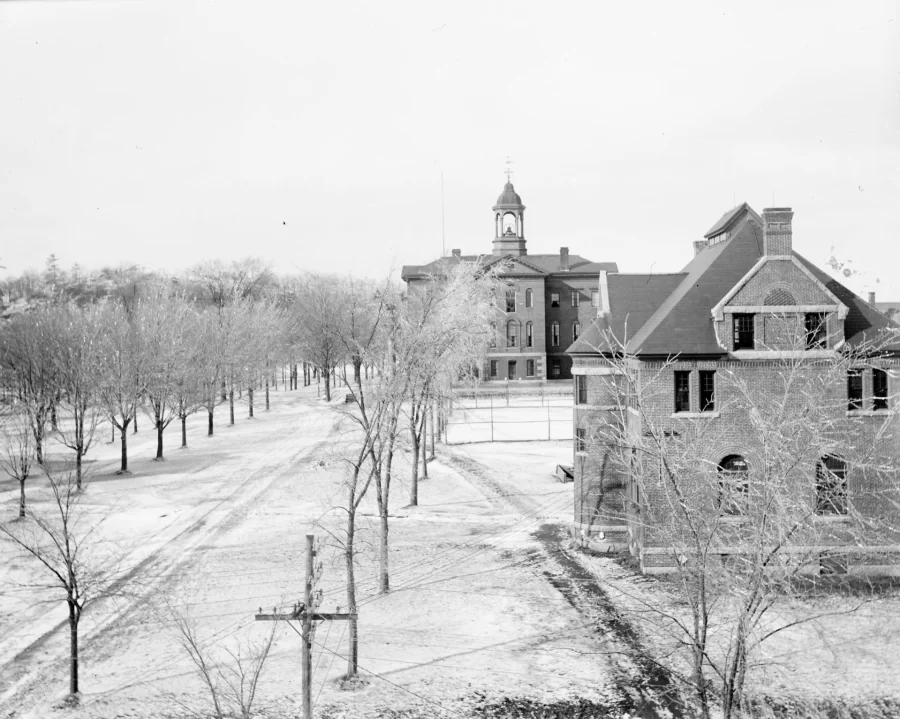
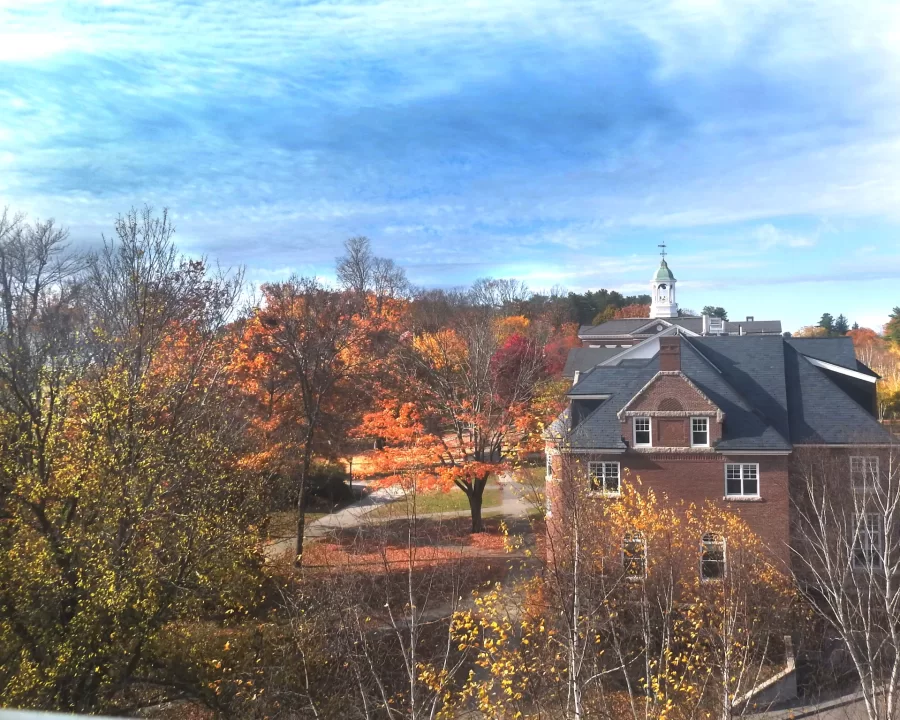
The less austere contemporary view (right) of Hedge Hall, still swathed in October’s brightness, with Hathorn Hall’s tower in the distance was taken from Professor of French and Francophone Studies Alex Dauge-Roth’s third-floor office in Roger Williams Hall.



